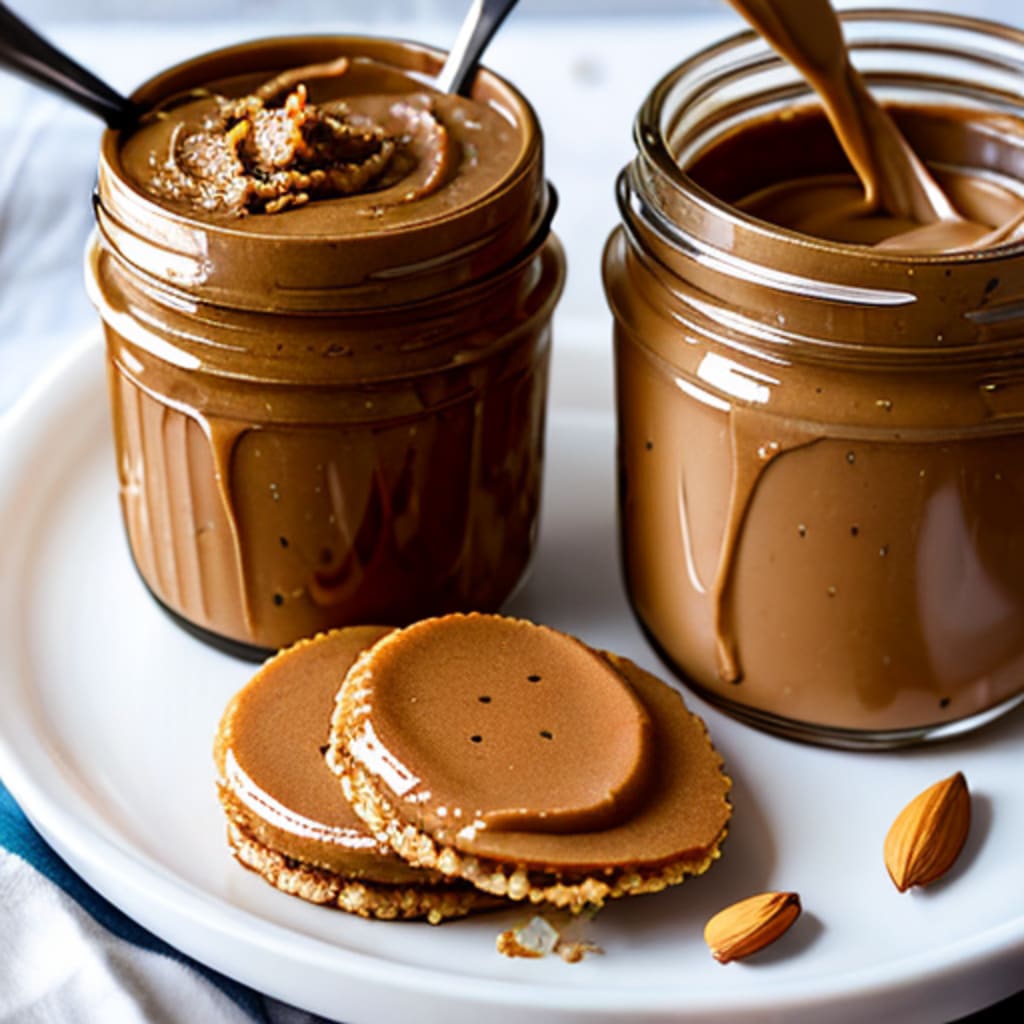Which is healthier between almond butter and peanut butter?
It's not just the taste or texture, but also the nutrient profiles that separate the two.

Although almond butter has recently reached the market as a healthier alternative to peanut butter, has it really improved health outcomes? Peanut butter has been a mainstay in North American pantries for decades. Comparing and contrasting almond butter with peanut butter.
ALMOND BUTTER AND PEANUT BUTTER'S DIFFERENCE
Almond butter and peanut butter have different properties. Grounded, dry-roasted peanuts are used to make peanut butter. Peanuts (Arachis hypogaea), though frequently mistaken for a nut, are actually a type of legume, making them related to beans and lentils. The edible seeds of the plant known as the peanut is a popular crop in the tropics and subtropics and is a good source of carbs, fiber, protein, and lipids. (1)
When making almond butter, raw or roasted almonds are ground into a paste or spread. Almonds are seeds rather than actual nuts, despite being termed a nut. The nutrients carbs, fiber, protein, and lipids can all be found in almonds. (2)
Almond butter and peanut butter can both be produced in smooth or crunchy forms, with or without other ingredients
NUTRITIONAL COMPARISON OF PEANUT BUTTER VS. ALMOND BUTTER
Both almond butter and peanut butter are sources of calories, carbs, protein, fat, and fiber in terms of nutrition. Here is a comparison of peanut butter with 2 teaspoons (32 grams) of almond butter.
All nutrition data based on natural, unsalted almond butter and natural, unsalted peanut butter.
CALORIES: A 2 - tablespoon serving of natural peanut butter has 200 calories, whereas a similar amount of natural almond butter has 202 calories.
PROTEIN: Since almonds are a nut (seed) and peanuts are a legume, peanut butter has a minor advantage in terms of protein content. Natural peanut butter wins the contest with 10.0 grams of protein per 2-tablespoon serving, compared to 4.8 grams in a 2-tablespoon serving of natural almond butter.
FAT: Because nuts inherently contain more lipids than legumes do, almond butter has a little bit more fat than peanut butter. Natural almond butter has 19.0 grams of fat per 2-tablespoon serving, compared to 16.0 grams of fat per 2-tablespoon serving for natural peanut butter.
CARBOHYDRATES: The amount of carbohydrates in two teaspoons of each butter is nearly equal: two tablespoons of peanut butter have 6.0 grams and two tablespoons of almond butter have 6.8 grams.
FIBRE: All nuts and seeds include fiber, but legumes have a higher amount. As a result, peanut butter has more fiber than almond butter. Natural almond butter has 1.2 grams of fiber per 2-tablespoon serving, compared to 2.0 grams per 2-tablespoon dose of natural peanut butter.
SUGAR: Given that peanuts are legumes, there is a little amount of sugar in peanut butter that makes it slightly sweeter than almond butter. Compared to natural peanut butter, which has 2.0 grams of sugar per 2-tablespoon serving, almond butter has zero grams of sugar per serving.
VITAMINS & MINERALS: Both almond butter and peanut butter are sources of vitamins and minerals, but there are some variations between the two. While almond butter has a higher concentration of vitamin E, magnesium, calcium, and iron, peanut butter has a higher concentration of B vitamins.
OTHER FACTORS TO THINK ABOUT
Ingredients
The ingredients needed to make almond butter and peanut butter are equally as vital to take into account as their nutritional content. According to the nutritional comparison above, many natural brands of almond butter and peanut butter are produced only of almonds and peanuts, however this is not the case with all products. In actuality, popular conventional peanut butter brands like Skippy, Kraft, and Jif frequently contain additional white sugar, maize maltodextrin, monoglycerides, and diglycerides as well as other oils including soybean and vegetable oil. (3)(4)(5) Even though these additions are less frequent in almond butter, certain types of the product nevertheless contain additional sugars and vegetable oils. In order to guarantee that you are purchasing the most nutrient-dense options, it is crucial to check the ingredients before choosing any brands of butter, whether it be almond or peanut butter.
Allergies
Peanuts and almonds are both common allergies. A legume, peanuts are one of the most allergenic foods in North America, and tree nut and almond allergies are also growing more and more widespread. If not, both almond butter and peanut butter are excellent options. This may be a concern to consider if you have allergies or are predisposed to gut health problems and dietary intolerances.
Price
The average price of a jar of peanut butter is much lower than that of an almond butter jar. While almond butter often costs $10 or more per jar, the majority of natural peanut butter products may be purchased in the $3 to $6 range. Along with supply and demand, their technique of manufacture and processing is largely to blame for the price discrepancy. In contrast to almonds, which are tree nuts and have highly precise climatic and soil requirements, peanuts grow underground in many locations of the world and may be grown for comparatively little money. (8) While consumers may believe that a product with a larger price tag is of superior quality, this isn't always the case with almond and peanut butter.
ALMOND BUTTER VS. PEANUT BUTTER: WHICH IS HEALTHIER?
There are only slight variations between almond butter and peanut butter. Almond butter has more nutrients and less sugar than peanut butter, which has a tiny advantage in protein and fiber. The amounts of calories, carbs, and fat are virtually equal in both products.
THE BOTTOM LINE
Both almond butter and peanut butter can be found in a balanced diet because they both have relatively similar nutrient profiles. Depending on personal preference, nutritional objectives, price range, and allergies, each person will have a different idea of what the greatest option is. No matter which choice you select, make sure to examine the ingredients and choose products that are made exclusively of almonds, peanuts, and/or salt wherever possible.
About the Creator
Enjoyed the story? Support the Creator.
Subscribe for free to receive all their stories in your feed. You could also pledge your support or give them a one-off tip, letting them know you appreciate their work.





Comments
There are no comments for this story
Be the first to respond and start the conversation.